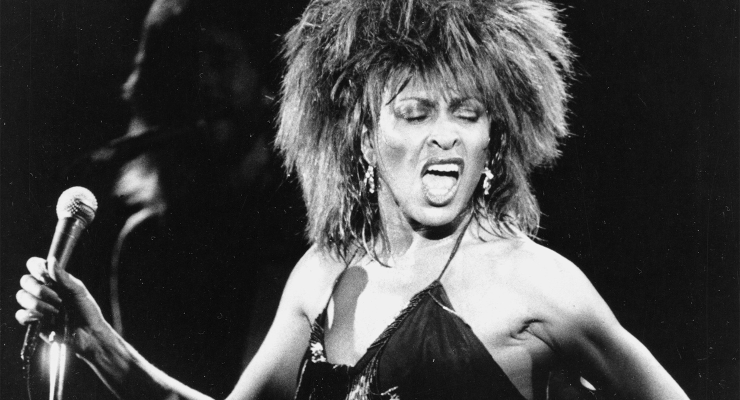
If you need any indication of what Tina Turner, who has died at the age of 83 in her adopted home of Switzerland, could do to and for a song, listen to the first recording of “What’s Love Got To Do With It?“. Cut a month or so before Turner’s version by British Eurovision winners Bucks Fizz, it was not issued for decades. By the most charitable estimation, it could be called agreeably kitsch and utterly forgettable.
Now listen to her version. Hear how much more desire and substance the song has, how much more life and fuel. It also may occur to you that the production is just as trapped in 1980s pop flourishes (that synth harmonica…) and that the category difference is almost entirely down to that voice.
It is remarkable to consider the breadth of work that bears her name: the filthy RnB of “A Fool in Love“; the almost impossible-to-categorise “River Deep, Mountain High“; the stomping country soul of her criminally underrated solo debut, Tina Turns the Country On!; ’80s torch songs like “We Don’t Need Another Hero“; the Bond theme “Goldeneye“. All belong to completely different aesthetic universes, and yet all could only be by Tina Turner, all united by that snarling contralto, a raw, husky mixture of desire and frustration, strength and suffering.
The 2021 documentary Tina and her 1986 memoir I, Tina give a hint of where that suffering came from. She was born Anna Mae Bullock in Tennessee in 1939 to parents who had never wanted or loved her — indeed, she became to believe her conception was all that had kept her mother in a loveless, abusive marriage — and when Tina was aged 11, her mother left.
Bullock took on the name Tina Turner when she began performing with Ike Turner. Ike was already prominent, and was at the time one of many to claim responsibility for the “first rock n roll record” with “Rocket 88“. The pair shared a kinetic musical chemistry — even more than Ray Charles or Aretha Franklin, their sound growls, earthier and rougher, than much else getting near the charts at the time. (“You see we never ever do nothing nice, easy / We always do it nice and rough” she famously intones over the intro of “Proud Mary“, and they had a stage show few could touch.)
But Ike was a control freak and abuser who subjected Tina to frequent sickening violence, including when she was pregnant. Eventually, in 1976, she literally fled, with nothing but loose change and a fuel card to her name. In the divorce, she asked for and got nothing more than her stage name.
Her bravery and candour in discussing the violence she experienced in a 1981 People magazine article and later in her memoir were a milestone in how domestic violence is discussed in the wider public.
By 1983, when she got a hold of “What’s Love Got To Do With It?”, she was in her mid-forties, and had been drifting into the nostalgia circuit since the mid-70s. The song (which Turner hated) was about to make her the oldest woman to have a US number one. Private Dancer, the album that followed, would sell more than 12 million copies, usher in the now-commonplace use of multiple production teams on one album, and launch Turner into a level of superstardom that eclipsed anything she’d achieved alongside Ike.
If a 44-year-old Black woman, a survivor of domestic violence, roughly a decade out from her last hit, suddenly becoming an international rock superstar doesn’t strike you as a near impossibility, that’s only thanks to Turner and what she made possible.








Had the privilege of seeing Ms Turner live at a tiny Sydney Club before her next breakthrough and WOW she was a tiny powerhouse of energy , shimmering, rocking, dancing , singing that I’m sure woke up the sleepy locals that night.
Ticket price? About $15 from memory – for over two hours of the most dynamic, awe-inspiring dancing and singing from “a woman in her forties” I’ve ever witnessed.
Remember feeling guilty for paying such a paltry fee to witness an incredible performance that night, which I still recall now….and saying to friends and family she should have been playing to a stadium crowd…a few years later she achieved that dream.
Vale Tina Turner – your life was incredible and your success deserved.
Thanks Charlie, Tina deserves praise on so many fronts. She was also a star but didn’t act like they often do, especially when hanging out with the NRL guys when parachuted in here back in the 80s.
Vale Tina … there is so much you can write about her, even from a purely parochial POV.
Sydney and Brisbane are currently being saturated with Simply The Best nostalgia (which was a highly successful and long-lasting bit of marketing for the old NSWRL, of course, even if the song itself is a bit ponderous and melodramatic) but her first campaign with an edit of What You Get Is What You See was pure dynamite. The kinetics of the imagery matched with the pleasing intertwining of C&W acoustic with rock electric guitar under Tina’s magnificent voice – The Osmonds could only hope to achieve such a union! – make this still one of the best sports marketing campaigns of all time anywhere, nearly 35 years on. And I don’t intend that as hyperbole … I’m serious, see for yourself: https://youtu.be/tXIzp0ok24I
And our old friend, Nutbush City Limits? Sneer all you want – you know you did the moves yourself at some stage during your life, at least if you had a sense of rhythm – but the only reason a square dance choreographed by persons unknown set to a mid-charting swamp boogie could turn into an enduring national cult activity is if the track itself is amazing … and it bloody well is. Part of that is Ike’s musical mastery, what with the muddy chugging guitars and the strategically short ‘n’ sharp horns and the moog solo that I find myself whistling an awful lot: YouTube suggests it’s a difficult track to play live in a constant tempo, presumably due to its complex composition. But of course it’s Tina who brings it home. I once thought she was phoning it in as the delivery is more restrained than usual, but it turns out she’s telling her story … and then you find out what “Highway (number) 19” means in the history of the civil rights movement. Yikes.
Tina Turner was one of the most sexiest singers out there in the day, her raunchy style anf exotic looks were always stunning, her songs still resonate in my head.
To come back from her adversary whilst married to Ike was strength personified.
Vale Tina Turner,a legend of her time.
I listened to the Bucks Fizz version in your link (I didn’t know the group wrote it, either). Okayish, but lacks the grunt and gravel of the Tina Turner version. It must be a strange position to be in for BF; on one hand, you rake in the royalties of a much better and more popular performance, but on the other hand you are forgotten by history. (Afternoon Delight? An advertising jingle).
Actually, I thought it was written by an Australian guy who was originally in the Twilights with Glenn Shorrock.